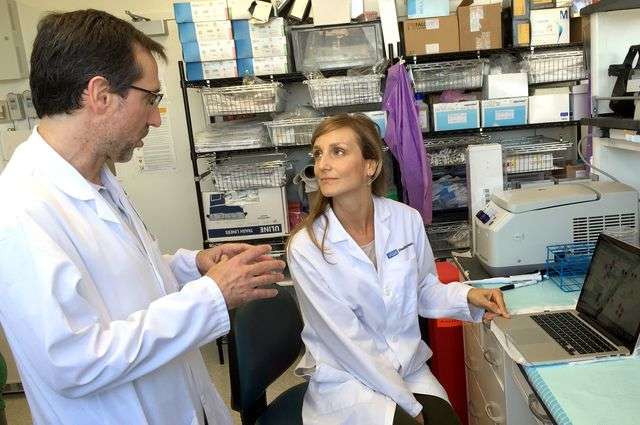Cancer-fighting therapy shows promise as treatment to speed up wound healing

A type of targeted therapy that has shown promising results treating advanced melanoma could also be used to help speed up how the skin repairs itself from injury, UCLA researchers have found, providing a potential new way to accelerate healing of acute and chronic wounds.
In the United States alone, chronic wounds affect more than 6.5 million people and an estimated $50 billion is spent annually treating these conditions. Many areas of medicine—from improving recovery times after surgery to reducing skin-related secondary effects of cancer treatments and other diseases—can benefit from speeding up the skin's healing process.
Aiming to meet this urgent and unmet need, the UCLA researchers investigated a new class of cancer therapy called BRAF inhibitors. These drugs work by blocking a mutated gene in melanoma, which rapidly shrinks the tumor. This can set off a cellular cascade in other skin cells in a process called paradoxical MAPK activation, which can lead to a variety of skin-related side effects, said Dr. Antoni Ribas, director of the UCLA Jonsson Comprehensive Cancer Center Tumor Immunology Program and senior author of the study.
"We set out to take advantage of our mechanistic understanding of these drugs and see if we could turn a side effect into a potentially beneficial effect," Ribas said. "These agents have great potential to be used to develop topical treatments to greatly accelerate wound healing."
The three-year study is published online today in the journal Nature Communications.
Led by Helena Escuin-Ordinas, the study's first author and a scientist in Ribas' lab, the research team first hypothesized that by inducing paradoxical MAPK activation in cells of the skin's outer layer (the epidermis, which plays a major role in the initial stage of wound healing) they could restore the barrier function of the skin. The team conducted experiments to demonstrate that local application of the BRAF inhibitor drug vemurafenib (brand name Zelboraf) to the skin could accelerate cutaneous wound healing.
The scientists then performed a series of further analyses to confirm that vemurafenib activated the skin cells, leading to the faster healing of wounds, Escuin-Ordinas said.
"Finding a cure for acute and chronic wounds remains a worldwide challenge," Escuin-Ordinas said. "Topical BRAF inhibitors hold great promise to promote skin recovery, not only after injury such as from abrasions, ulcers or surgery, but in skin-related side effects that result from treatment for a wide variety of diseases, such as cancer and diabetes, where current therapies are not highly effective."
The researchers plan to develop pre-clinical models to further study these mechanisms, with the goal to begin clinical studies of potential topical BRAF treatments in the near future, Ribas said.
More information: Cutaneous wound healing through paradoxical MAPK activation by BRAF inhibitors. DOI: 10.1038/ncomms12348

















